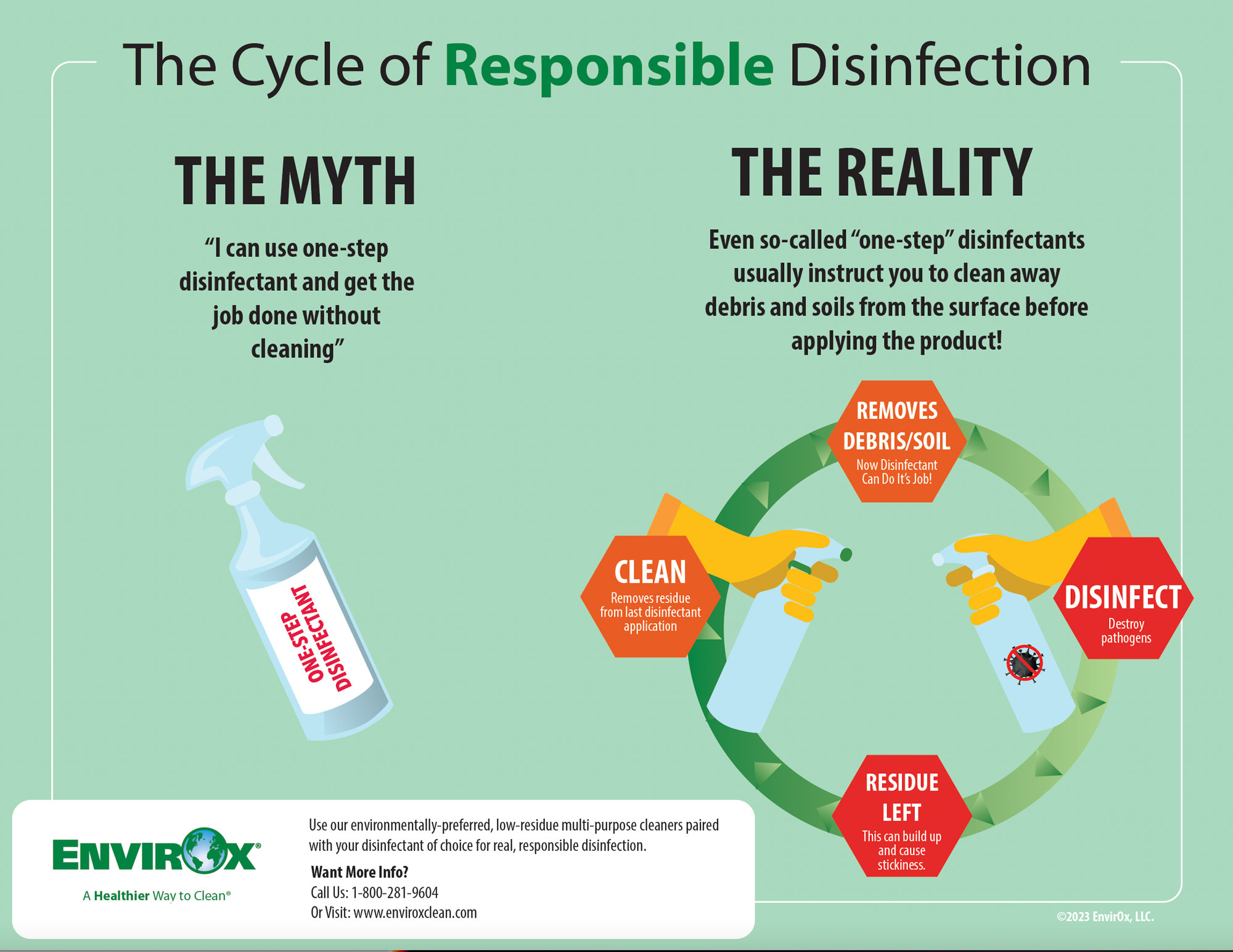People have been trying to define what the often-repeated phrase "the new normal" actually means. We have a better idea than ever. One of the main things we've learned is that COVID is likely staying with us, in some form, for a long time to come. And, of course, other pathogens will come and go. At EnvirOx, we're committed to bringing you tools you can use to practice responsible disinfection. We think this is the key to operating in "the new normal."
Benefits of Responsible Disinfection
- Help your bottom line: Protect your facility with safer products and procedures
- Make a safer working environment for cleaning workers and building occupants
- All without impacting cleaning effectiveness and leaving behind sticky, slippery residue crud everywhere.
What is Responsible Disinfection?
We define responsible disinfection in three ways:
1. Only disinfect when and what you have to.
Through a combination of panic, bad info, improper training, and other factors, disinfectant was (literally) being sprayed everywhere for a while. Not only are there potential long-term health effects to disinfectant usage, but disinfectant usage has led to residue build-up, and even damage to some surfaces. That's why we recommend using our H2Orange2 Virucide Sanitizer Cleaner. Having a cleaning product with sanitizing/virucide properties is not a substitute for a disinfectant. Sometimes, with certain pathogens, you need something stronger. But if you're not fighting those specific pathogens, then having a well rounded cleaner with sanitizing and virucidal action is a great way to build up your facilities overall pathogen fighting capabilities without the harsh chemicals that disinfectants can bring.
2. The product you use matters
Not all disinfectants are created equally. Some have harsher chemicals than others, or require heavier usage or longer dwell times. Make sure you're taking all these factors into consideration when you choose a disinfectant.
3. The process you use matters
We have banged on this particular drum a lot, but that's because we find there are always still people who haven't heard it. But you MUST Clean and THEN Disinfect. The CDC reccommends it. And there are so many reasons why. If you don't clean a surface of dirt and debris before using the product, it can block disinfectant from getting to the surface. Also, if you're not cleaning between disinfectant applications, then you're not getting rid of the residue the disinfectant leaves behind. This is part of the reason so many facilities are seeing surfaces turn dull or old-looking when they use disinfectants. Of course, the cleaning product you use here matters, as well. You need a low-residue cleaning product like any of our H2Orange2 or Multi-Purpose Cleaner products to do the job. Not to put too fine a point on it, but "low residue" isn't something a lot of cleaning product manufacturers do well.
We've made a handy graphic for the concept of the cycle of responsible disinfection. You can click the image below or click here to download a PDF that's printable. Hang it up in your cleaning closet, distribute it to employees, or just grab the image and use it a future training. Responsible disinfection is the duty of everyone, and will benefit us all in the long run.
